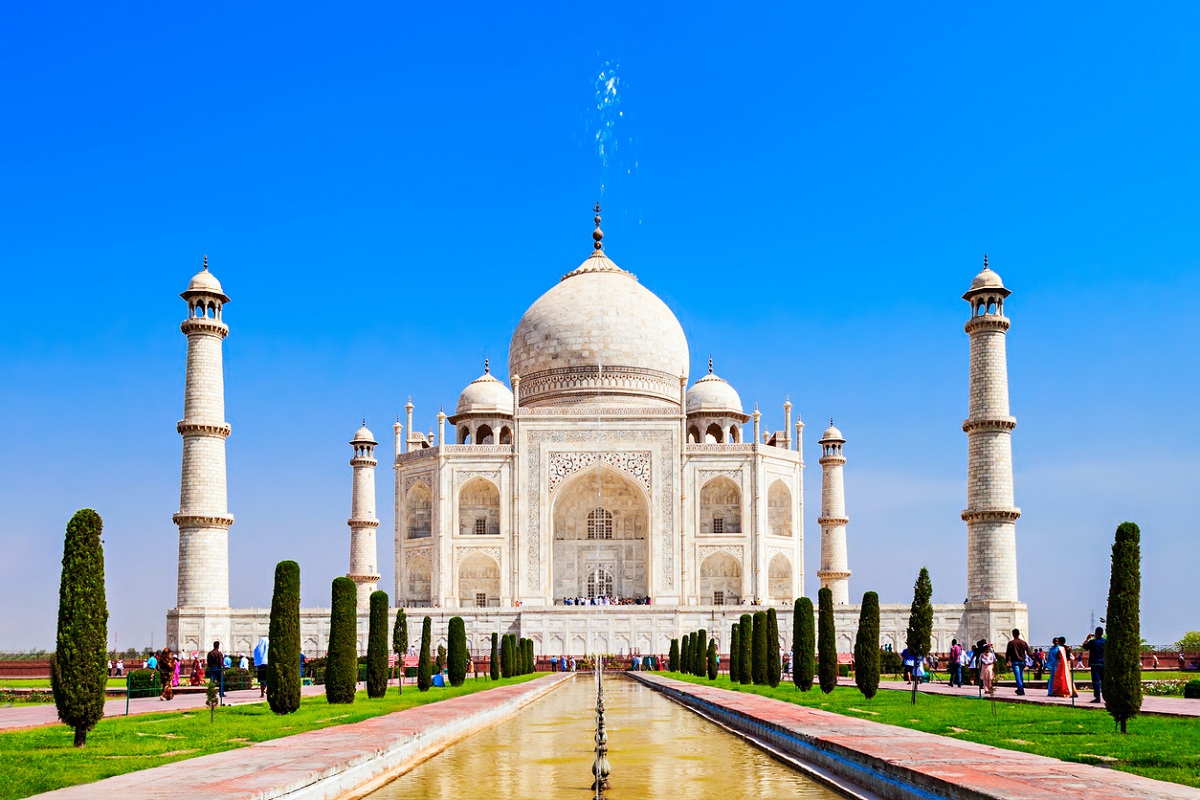Trump gifts signed copy of his book to PM Modi, says ‘You are great’
US President Donald Trump on Thursday gifted a signed copy of his book 'Our Journey Together' to Prime Minister Narendra Modi when the two leaders met at the White House.
Only a few tourists are genuinely aware of the historic significance of the monument and its great heritage value, but there are hordes of others who care nothing for the sanctity of the Taj.

(Image: iStock)
The 17th century monument of love, the iconic Taj Mahal in Agra, is feeling the heat of abruptly rising temperature, sand blasting by seasonal dust storms and human apathy.
“The temperature has gone up steeply in the last few days and there have been a series of sand storms,” said Surendra Sharma, President of the Braj Mandal Heritage Conservation Society.
Advertisement
Despite a series of directions by the Supreme Court and the National Green Tribunal, successive governments have been dragging their feet to rejuvenate the Yamuna river by containing pollution and maintaining flow of water round the year, complained green activist Shravan Kumar Singh.
Advertisement
After a brief respite during the 180-day lockdown triggered by the Covid-19 pandemic last year, the Taj is again looking pale, notwithstanding the mud therapy and other measures to beautify the monument.
Heritage conservationists in Agra say that if the monument looks pale to the visitors, the reason is the dry and heavily polluted Yamuna that once formed an integral part of the Taj Mahal complex.
Standing tall in the scorching summer sun, the monument of love is enveloped in yellowish sand from the neighbouring Rajasthan deserts. Any discernible visitor can tell that the summer heat is taking its toll on the Taj Mahal, blasted by sand from the dry Yamuna bed and the dust-laden winds from the Rajasthan deserts.
The gaps left by illegal mining in the Aravali ranges has raised the SPM (suspended particulate matter) in Agra. Against a standard of 100 microns per cubic metre, it remains as high as 300, touching 500 during the summer months. The problem is that sandy particles rub against the monument and leave pox marks, making the surface rough, as has been pointed out in many studies.
However, conservationists say that the crisis the Taj confronts comes not merely from nature and pollution, but also from the people — with too many tourists and vehicles visiting Agra.
The number of vehicles in the city has shot up from around 40,000 in 1985 when Firozabad too was part of the Agra district, to more than a million now. The opening of the Yamuna Expressway has increased vehicular traffic. The pressure of heavy vehicles on the Delhi-Kolkata, Delhi-Mumbai and Lucknow-Agra National Highways passing through Agra has increased phenomenally.
Adding to its fatigue is the ever-increasing human load. From a few hundred tourists some decades ago, the Taj is now daily visited by thousands of people. The tourism industry that thrives on milking the Taj Mahal wants more sops for the visitors to attract them to Agra, but the conservationists want restrictions imposed to gradually reduce the human load.
Visitors who see the Taj Mahal for the first time never forget to ask the guides, “Is it turning yellow?”
The explanation given by the guides is that it is the outcome of the natural ageing process and has nothing to do with industrial pollution, as all polluting industries in Agra region have been shut down by the Supreme Court.
To ensure its dazzling whiteness and remove the stains left behind by the pollutants on the Taj Mahal, originally called ‘Bagh e Baahist’, the Archaeological Survey of India carries out periodic ‘multani mitti’ (Fuller’s earth) treatment. The white marble surface is washed with soap and water too on Fridays when the monument breathes freely to enjoy its weekly off.
When thousands of tourists ‘invade’ the serene monument every day, leaving behind hand and foot marks on the white stones, and tonnes of noxious gases through breathing, the cumulative affect on the fragile structure is huge.
Only a few tourists are genuinely aware of the historic significance of the monument and its great heritage value, but there are hordes of others who care nothing for the sanctity of the Taj.
While the problem of human load will be sorted out shortly, as a number of studies are being conducted by the ASI, the sad state of the Yamuna river at the rear is a huge problem that defies solution. According to Ved Goutam, a tour guide, Agra has already become a desert.
“When you see the camels moving around on the dry river bed, you get the impression that Agra is in a desert, a part of the Rajasthan state,” he said.
The Archaeological Survey of India has restored the Mehtab Bagh at the rear of the Taj Mahal and the state forest department has developed a dense green buffer along the river bank on the opposite side.
But the major problem is the Yamuna, which has been reduced to a ‘sewage canal’. Fears are being raised that if there is no fresh supply of water in the river that touches the Taj foundation to provide a shock-absorbing buffer to insulate the building from seismic movements, the monument could tilt, cave in or struggle for stability.
Advertisement